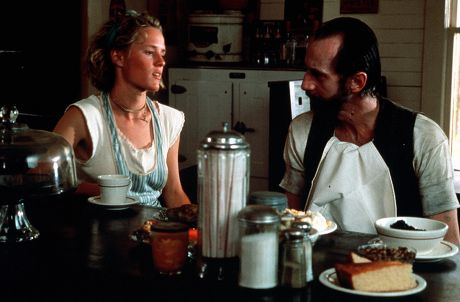
Though often remembered for its warmth, humor, and empowerment, Fried Green Tomatoes is also a film steeped in loss. Death and grief appear throughout the story—not as moments of shock, but as quiet undercurrents, shaping the lives and identities of the characters. The film approaches death not with horror, but with tenderness, showing us how loss can shape resilience, deepen love, and redefine one’s purpose.
Buddy Threadgoode’s Death: A Life Derailed by Tragedy
The earliest and most haunting moment of loss comes with the sudden death of Buddy Threadgoode, Idgie’s beloved brother. Charming, kind-hearted, and protective, Buddy represents innocence and possibility. His tragic death — hit by a train as he tries to retrieve Ruth’s dropped hat — is not only a literal loss, but also the symbolic end of Idgie’s childhood.
This event fractures Idgie emotionally. She retreats from the world, isolating herself, and begins to reject the polite, Southern expectations of femininity. Buddy’s death doesn’t just remove a person — it removes a piece of her identity. The trauma is foundational to her character and helps explain her later defiance and protectiveness.
The Pain of Letting Go: Ruth Jamison’s Illness and Death
Perhaps the most emotionally intense arc in the film is Ruth’s slow decline due to cancer. Her illness is not sudden like Buddy’s death — it’s lingering, painful, and heavy with unspoken fear. Idgie’s response is not to run away like after Buddy’s death, but to stay and care for Ruth until the end. This shift in behavior shows Idgie’s growth — she has learned to stay present through loss.
Ruth’s final days are marked by intimacy, laughter, and deep emotional honesty. Their goodbye is soft, devastating, and filled with love. In caring for Ruth, Idgie finds a new definition of strength: not just rebellion, but devotion. Ruth’s death is not the end of their story—it is the beginning of Idgie’s legacy.

Funerals and Farewells: Death as Community Memory
In the film, funerals and death rituals are not shown with grand spectacle but with quiet reverence. When Ruth passes away, her funeral is subdued, attended by the close-knit community that once ate at her café and knew her as more than just “the preacher’s daughter.” Her legacy is baked into the food served, the café she built, and the lives she touched.
The film suggests that death doesn’t erase someone; it embeds them deeper into the memory of those they loved. The act of storytelling, especially through Ninny, becomes a way to preserve lives — Idgie’s, Ruth’s, Buddy’s — long after they are gone.
Ninny’s Reflections: Aging, Loneliness, and the Nearness of Death
Ninny Threadgoode, the elderly woman who tells most of the story, is herself facing the nearness of death. She has outlived her husband and most of her loved ones. Yet she doesn’t dwell in bitterness. Instead, she relives her memories through storytelling, finding new life by passing her history to Evelyn.
Her perspective is not one of despair, but of peaceful acceptance. Ninny’s tales become bridges, connecting generations, showing that while the body may grow frail, the heart continues to beat through connection, memory, and compassion.
Evelyn’s Transformation Through Death and Renewal
Even Evelyn’s arc is touched by grief — not of someone else’s death, but the metaphorical death of her old self. The timid, apologetic woman who once apologized for everything and tried to shrink herself into invisibility begins to “die off,” replaced by a stronger, bolder Evelyn.
This transformation is catalyzed by Ninny’s stories of love, loss, and grit. Evelyn learns that to live fully, one must first let go of who they were — and not be afraid to grieve that version. Grief, in this sense, is not only about death but about change.
In Death, There is Life
Fried Green Tomatoes never uses death as a shock tactic. It uses it to frame love, courage, and memory. Whether it’s the abrupt loss of Buddy, the gradual departure of Ruth, or the unspoken mourning of lives not fully lived, the film teaches us that grief is not the end of connection.
Instead, loss becomes a quiet invitation — to remember more deeply, to live more fully, and to pass on the love that remains. In this way, Fried Green Tomatoes is not just about death, but about the life that continues in its wake.
